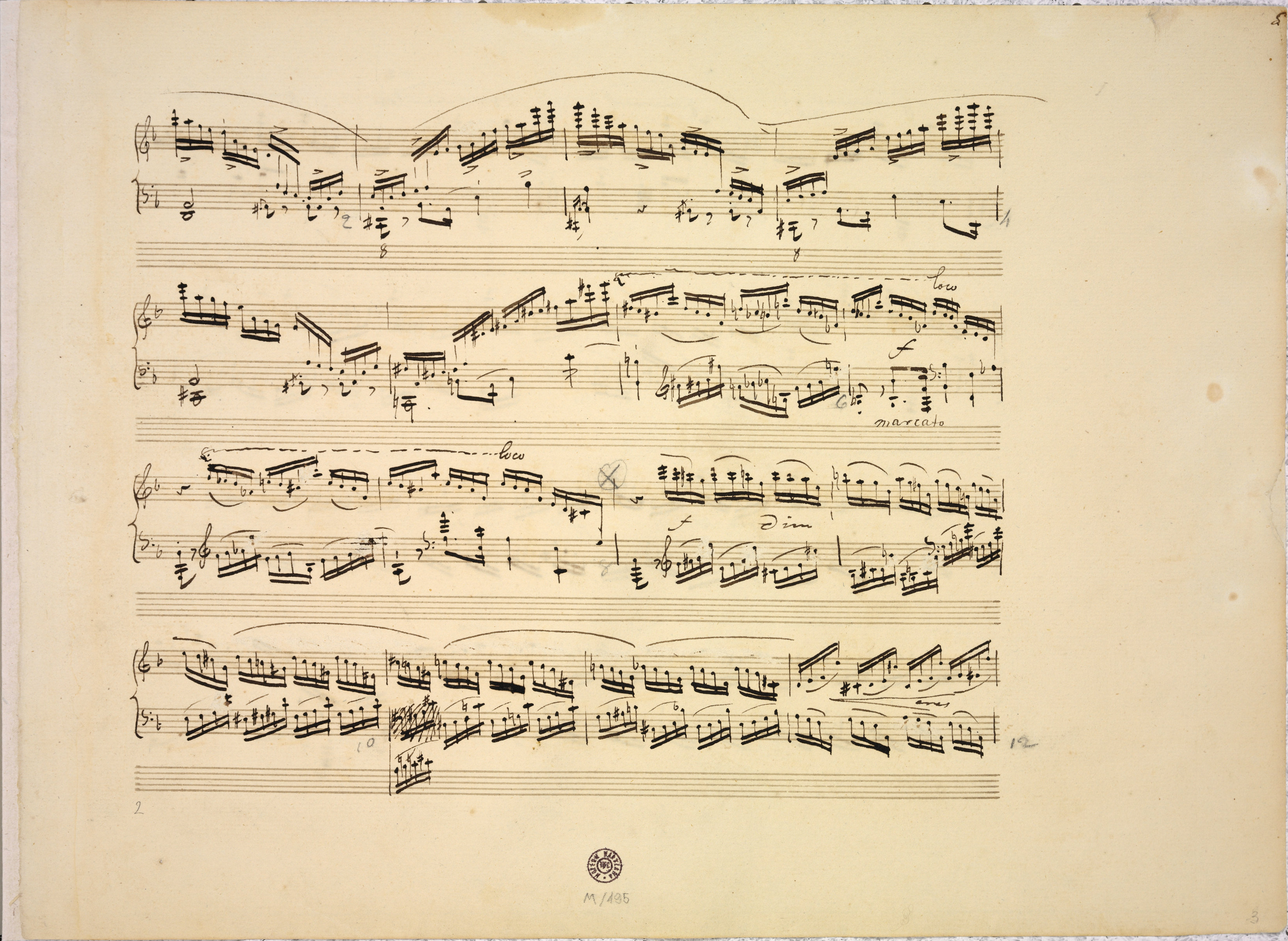



In A (→FE→EE) the  raising f to f
raising f to f is placed only in the 2nd group of semiquavers. The tonality of D major, consolidated in the previous bars, does not leave any doubt that lack of
is placed only in the 2nd group of semiquavers. The tonality of D major, consolidated in the previous bars, does not leave any doubt that lack of  before the 2nd note in the bar is another sign Chopin overlooked, due to obviousness of the situation. Writing a
before the 2nd note in the bar is another sign Chopin overlooked, due to obviousness of the situation. Writing a  before the 6th semiquaver was probably related to the impression of harmonic change – from the 2nd group in bar 43 to the 1st group in bar 44, the key of F
before the 6th semiquaver was probably related to the impression of harmonic change – from the 2nd group in bar 43 to the 1st group in bar 44, the key of F minor transitionally prevails. The sign in the 2nd group confused the reviser of GE, who, believing that it was f that was supposed to be in the 1st group, added a cautionary
minor transitionally prevails. The sign in the 2nd group confused the reviser of GE, who, believing that it was f that was supposed to be in the 1st group, added a cautionary  before the 2nd semiquaver. Chopin would often place an accidental too late, e.g., in bar 42, as well as in other pieces, e.g., Etude in A
before the 2nd semiquaver. Chopin would often place an accidental too late, e.g., in bar 42, as well as in other pieces, e.g., Etude in A , No. 10, bar 37, Sonata in B
, No. 10, bar 37, Sonata in B minor, Op. 35, 4th mov., bar 51, the Mazurka in A minor, Dbop. 42B, bar 61, the Concerto in F minor, Op. 21, 1st mov., bar 100, 2nd mov., bar 75.
minor, Op. 35, 4th mov., bar 51, the Mazurka in A minor, Dbop. 42B, bar 61, the Concerto in F minor, Op. 21, 1st mov., bar 100, 2nd mov., bar 75.
Compare the passage in the sources »
category imprint: Interpretations within context; Differences between sources
issues: Annotations in teaching copies, GE revisions, Omission of current key accidentals, Errors of A, Annotations in FES
notation: Pitch





